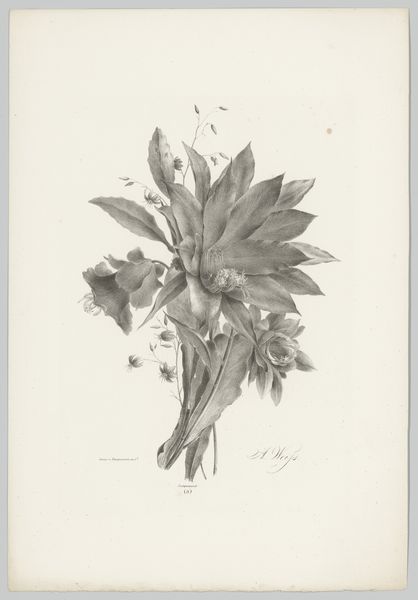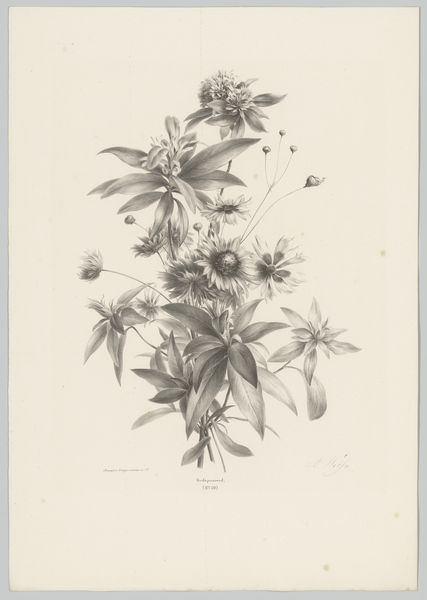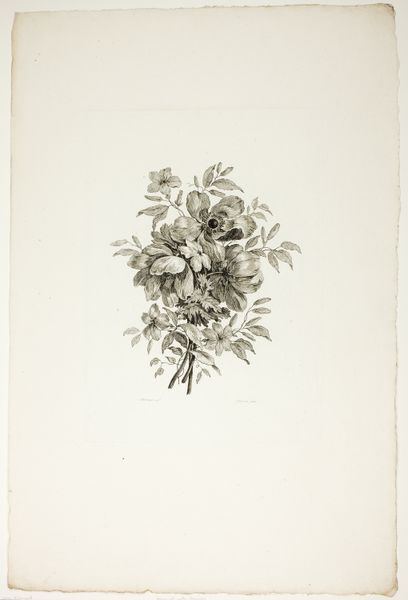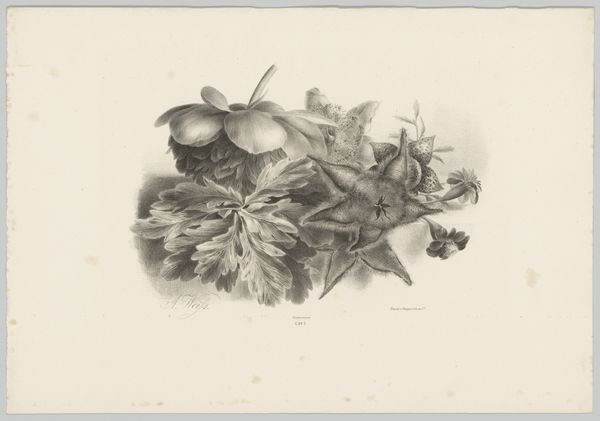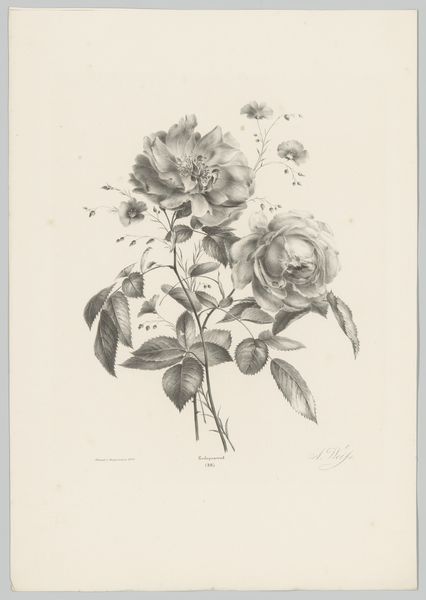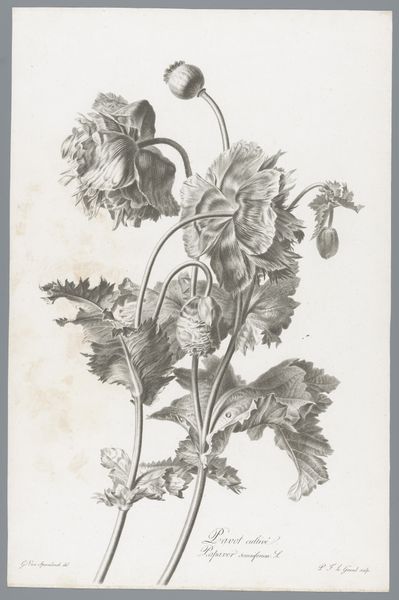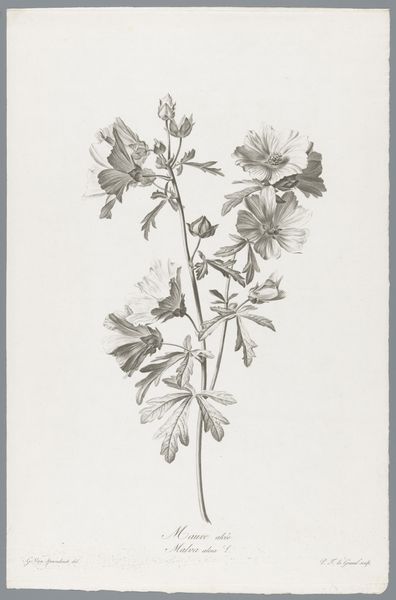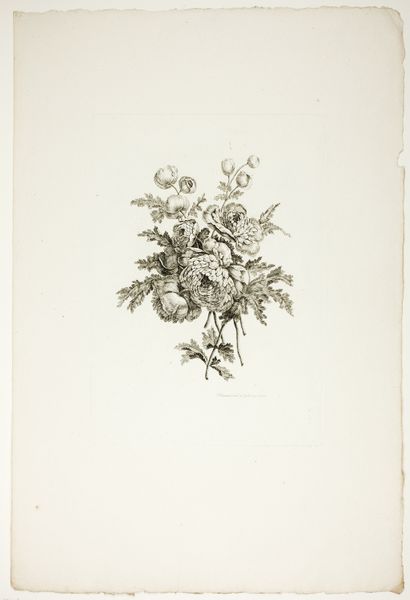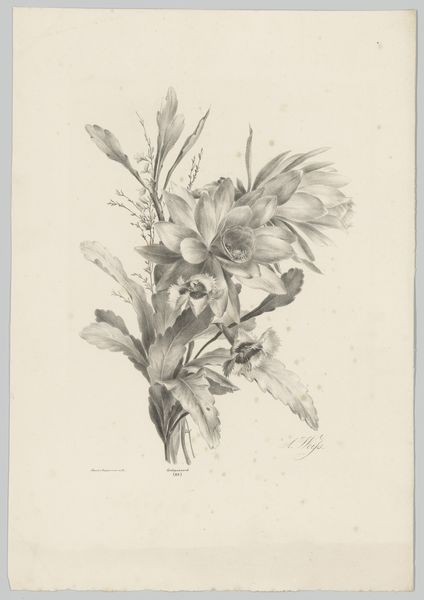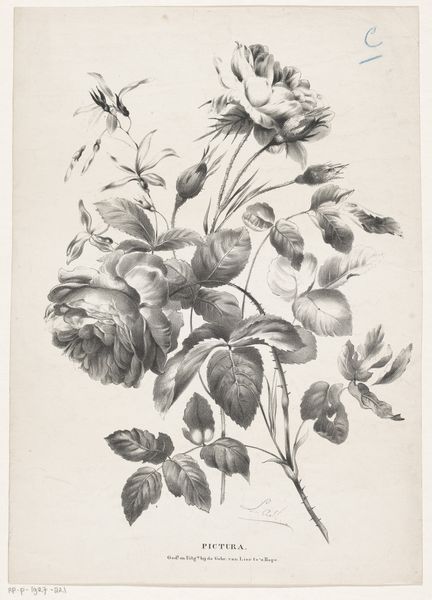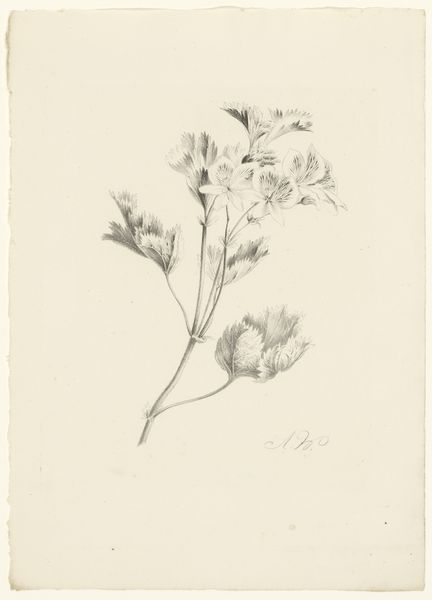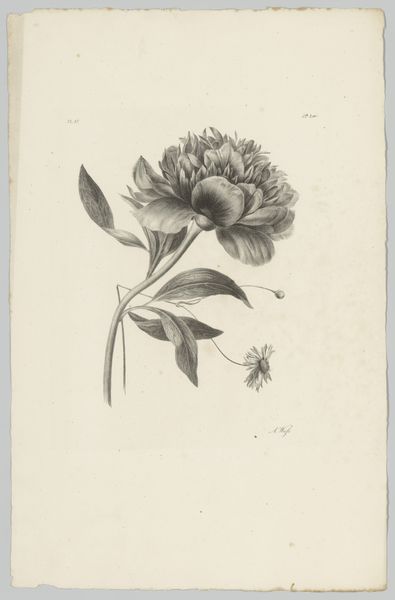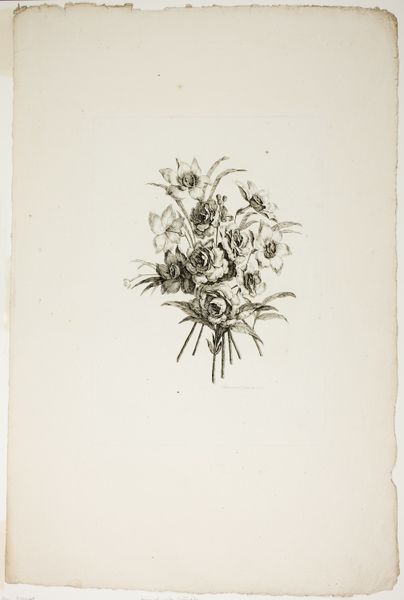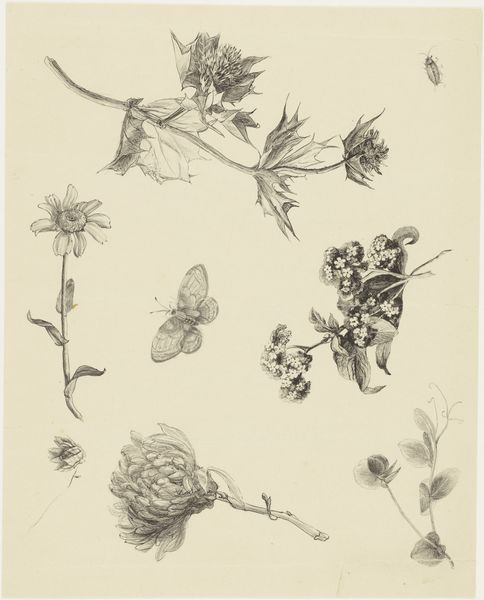
drawing, pencil
#
pencil drawn
#
drawing
#
pencil sketch
#
flower
#
pencil drawing
#
romanticism
#
pencil
#
pencil work
Dimensions: height 476 mm, width 309 mm
Copyright: Rijks Museum: Open Domain
Curator: Here we have a pencil drawing titled "Roos en andere bloem," or "Rose and other flower," dating from around 1820 to 1833. It resides here at the Rijksmuseum. Editor: My initial reaction is one of delicacy and restraint. The drawing possesses a kind of hushed quality, doesn't it? The greyscale emphasizes form and detail, but everything is so softly rendered. Curator: It's Anton Weiss, the artist. He really captured a sense of budding potential and ephemeral beauty. What kind of significance might we find in it? Editor: The rose, of course, is laden with symbolism. Here, the rose bud seems like a promise or symbol of hope for things to come. You can find roses represented across different periods in Europe. Curator: Definitely. It almost feels like a vanitas piece without overt symbols of mortality, as we get the bud. The "other flower" provides that context, however. It reminds the viewer of life cycles, something that art represents more broadly across civilizations and different historical epochs. Editor: That juxtaposition emphasizes the fleeting nature of beauty itself. Weiss places the viewer at a point in which things can change to emphasize themes that remind you to value youth before aging, but in a reserved manner. It is certainly evocative of a bygone era of scientific illustration combined with sentimental romanticism. It speaks to a time deeply concerned with cataloging the natural world and finding deeper meanings in the beauty it holds. Curator: I agree. The Romantic movement was characterized by a return to emotionality as well as these themes about the organic versus the human, such as birth, sexuality, mortality. Editor: So while ostensibly a botanical drawing, we're actually observing cultural preoccupations with change. Curator: Absolutely, it acts as both botanical study and reflection on time, loss, and rebirth. That pencil, through skillful shading, transforms a flower arrangement into a potent statement. Editor: It's intriguing how the minimalist approach makes those complex concepts more potent. Curator: Yes, that subtlety encourages active viewing. Thank you for helping me unlock some of its secrets! Editor: Always a pleasure to think through these visual pieces!
Comments
No comments
Be the first to comment and join the conversation on the ultimate creative platform.
